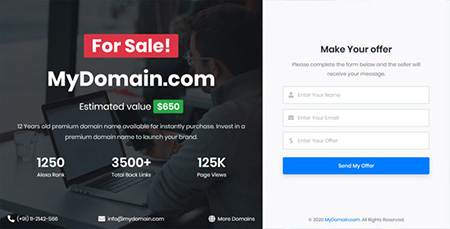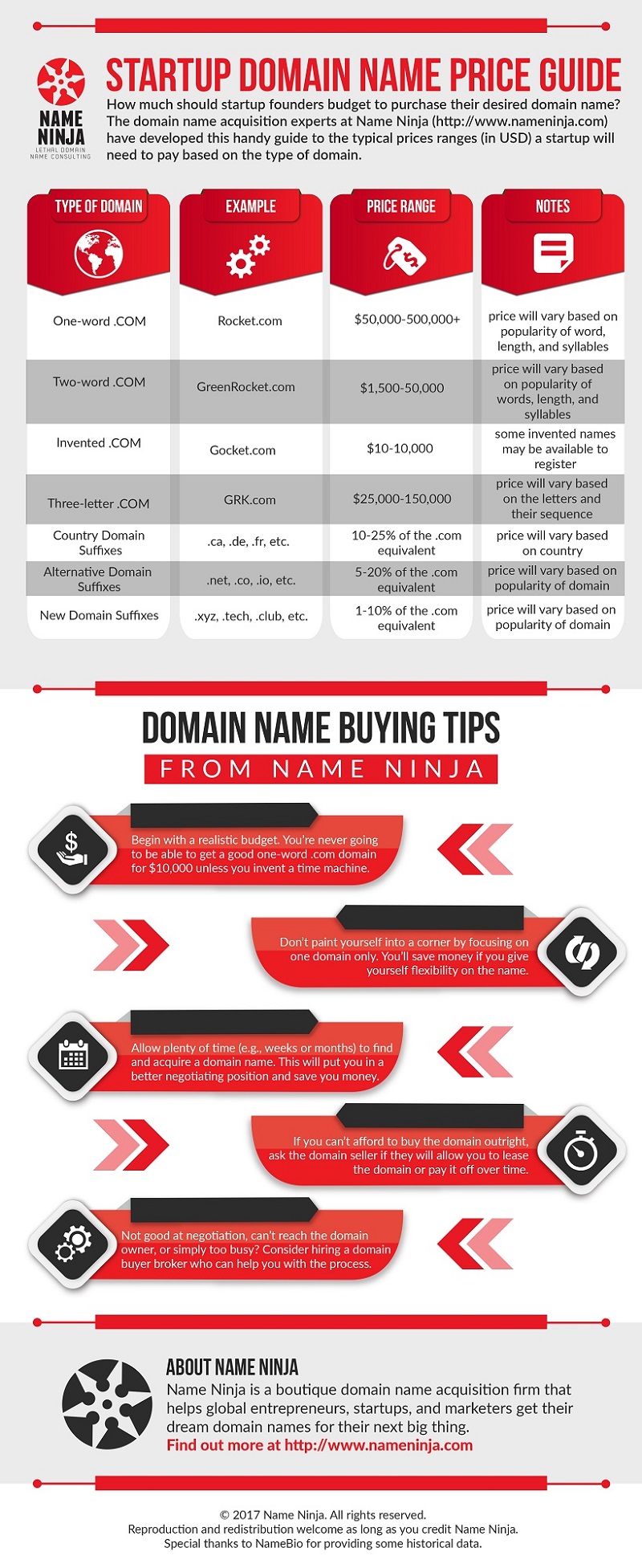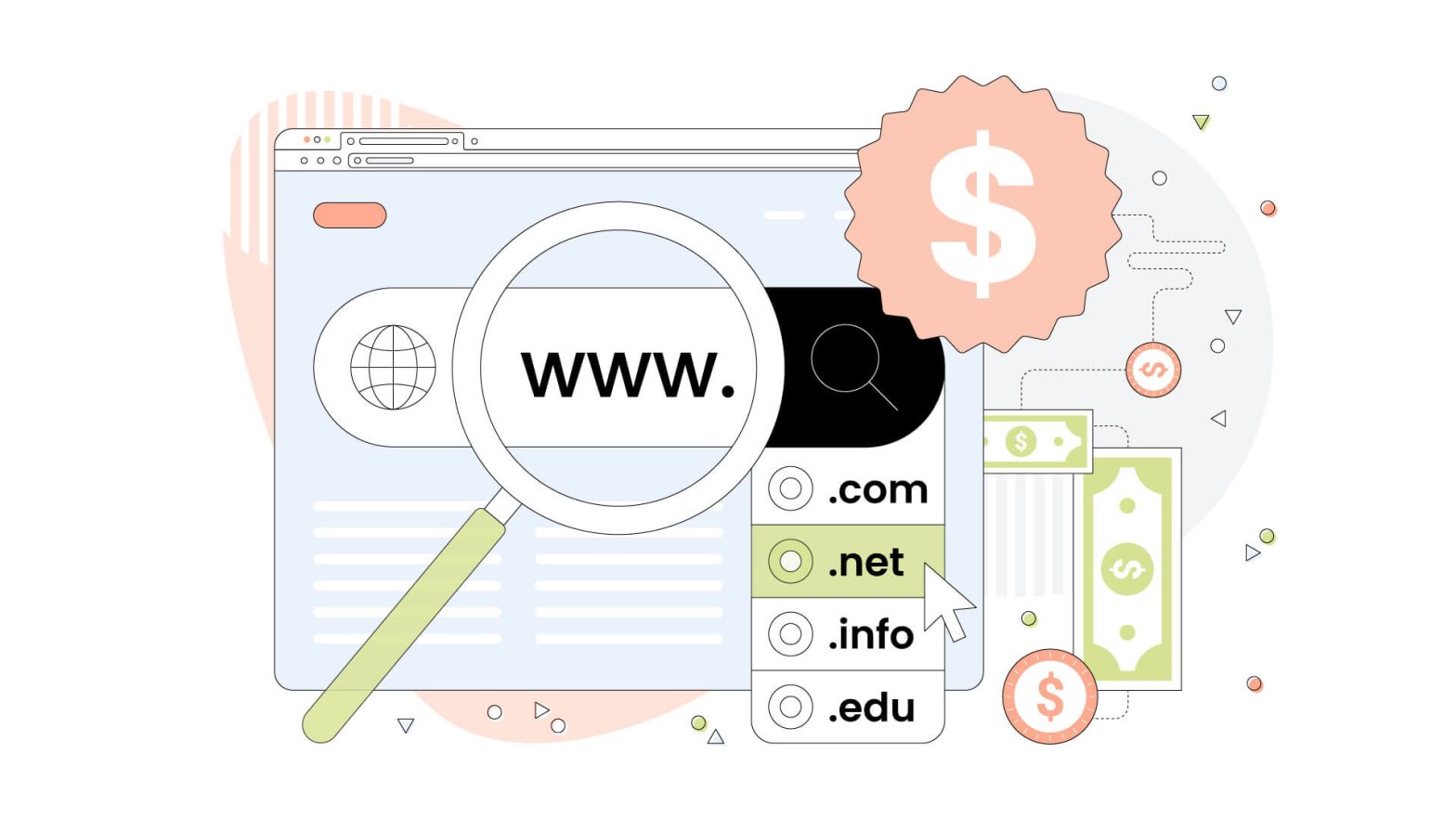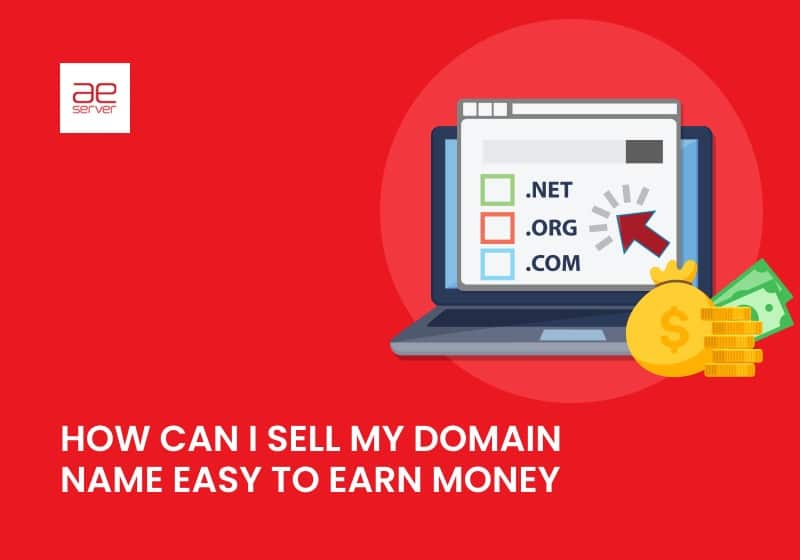Unlocking the Value of Your Domain Name
Domain names have become a valuable commodity in the digital age. As a digital asset, a well-chosen domain name can appreciate in value over time, making it a potentially lucrative investment. For those looking to capitalize on their domain name’s value, selling it can be a viable option. But why would someone want to sell their domain name? The reasons are varied, but common motivations include financial gain, portfolio consolidation, and a desire to free up resources for other projects.
Before diving into the process of selling a domain name, it’s essential to understand the concept of domain name valuation. A domain name’s value is determined by various factors, including its length, memorability, and relevance to a particular industry or niche. Additionally, the presence of desirable keywords, such as those with high search volume or commercial intent, can significantly impact a domain name’s value.
For those looking to sell their domain name, it’s crucial to recognize the potential value of their digital asset. By understanding the factors that contribute to a domain name’s value, sellers can better position themselves for a successful sale. Whether you’re looking to sell a single domain name or an entire portfolio, the process can seem daunting. However, with the right guidance, you can unlock the value of your domain name and achieve a successful sale.
When considering how to sell your domain name, it’s essential to keep in mind that the process requires careful planning and execution. By taking the time to understand the value of your domain name and preparing it for sale, you can increase your chances of a successful transaction. In the following sections, we’ll explore the steps involved in selling a domain name, from preparation to closing the deal.
Preparing Your Domain for Sale: Tips and Tricks
Before listing your domain name for sale, it’s essential to prepare it for potential buyers. This involves ensuring that your domain name is properly registered, updating your WHOIS information, and creating a professional sales page. Proper registration is crucial, as it verifies your ownership and ensures a smooth transfer process. Make sure to update your WHOIS information to reflect your current contact details, as this will help facilitate communication with potential buyers.
A professional sales page is also vital in showcasing your domain name’s value and attracting potential buyers. Include relevant information such as the domain name’s history, traffic statistics, and any notable features or benefits. Use a clear and concise format, and consider adding visuals such as logos or screenshots to enhance the page’s appeal. When creating your sales page, keep in mind that you’re not just selling a domain name – you’re selling a potential business opportunity.
In addition to preparing your domain name and sales page, it’s also important to consider the overall presentation of your domain name. Ensure that your domain name is easy to remember and spell, and that it’s relevant to your target audience. A well-presented domain name can make a significant difference in attracting potential buyers and securing a successful sale. By taking the time to prepare your domain name and sales page, you can increase your chances of selling your domain name quickly and for a good price.
When preparing your domain name for sale, it’s also essential to consider the potential risks and challenges involved. For example, you may need to deal with lowball offers or negotiate with multiple buyers. By being prepared and having a clear understanding of your domain name’s value, you can navigate these challenges with confidence and achieve a successful sale. In the next section, we’ll discuss the factors that affect a domain name’s value and introduce pricing strategies to help you determine the worth of your domain name.
Determining the Worth of Your Domain: Pricing Strategies
When it comes to selling a domain name, determining its worth is a crucial step in the process. The value of a domain name is influenced by various factors, including keyword relevance, brandability, and market demand. Understanding these factors and how they impact the value of your domain name is essential in setting a competitive price.
Keyword relevance is a significant factor in determining the value of a domain name. Domain names that contain high-demand keywords or phrases can command a higher price due to their potential for generating revenue through advertising or e-commerce. Brandability is another important factor, as domain names that are easy to remember and spell can be more valuable than those that are not.
Market demand also plays a significant role in determining the value of a domain name. Domain names that are in high demand, such as those related to emerging technologies or trends, can command a higher price than those that are not. Additionally, the length and extension of the domain name can also impact its value, with shorter domain names and popular extensions like .com and .net generally being more valuable than longer domain names and less popular extensions.
When it comes to pricing your domain name, there are several strategies to consider. Fixed pricing involves setting a fixed price for the domain name, while auctions involve listing the domain name for sale and allowing buyers to bid on it. Negotiations involve working with potential buyers to agree on a price, and can be a good option for domain names that are in high demand.
Another pricing strategy is to use a domain name appraisal service, which can provide an estimated value of the domain name based on its characteristics and market demand. These services can be useful in determining a fair price for the domain name, but it’s essential to keep in mind that the estimated value may not reflect the actual sale price.
Ultimately, the key to determining the worth of your domain name is to understand its value proposition and to price it competitively based on its characteristics and market demand. By doing so, you can increase the chances of selling your domain name quickly and for a good price. In the next section, we’ll discuss the different sales platforms available for selling domain names, including marketplaces and brokers.
Choosing the Right Sales Platform: Marketplaces and Brokers
When it comes to selling a domain name, choosing the right sales platform is crucial. There are several options available, including domain name marketplaces and brokers. Each platform has its own fees, commissions, and benefits, so it’s essential to understand the differences before making a decision.
Domain name marketplaces, such as Sedo, Uniregistry, and GoDaddy Auctions, provide a platform for buyers and sellers to connect. These marketplaces often have a large inventory of domain names, making it easier for buyers to find what they’re looking for. Additionally, many marketplaces offer features such as domain name appraisal, escrow services, and secure payment processing.
Sedo, for example, is one of the largest domain name marketplaces, with over 18 million domain names listed. They offer a range of services, including domain name appraisal, escrow services, and secure payment processing. Uniregistry is another popular marketplace, with a focus on providing a user-friendly platform for buying and selling domain names.
GoDaddy Auctions is a popular platform for buying and selling domain names, with a large inventory of domain names and a user-friendly interface. They also offer features such as domain name appraisal and escrow services.
Domain brokers, on the other hand, specialize in buying and selling domain names. They often have a deep understanding of the domain name market and can provide valuable guidance and advice. Brokers can also help facilitate the sale of a domain name, handling negotiations and ensuring a smooth transfer process.
When choosing a sales platform, it’s essential to consider the fees and commissions associated with each platform. Marketplaces often charge a commission on the sale price of the domain name, while brokers may charge a flat fee or a percentage of the sale price.
Ultimately, the choice of sales platform will depend on the specific needs and goals of the seller. By understanding the differences between marketplaces and brokers, sellers can make an informed decision and increase their chances of selling their domain name quickly and for a good price.
Crafting a Compelling Sales Pitch: Highlighting Your Domain’s Strengths
When it comes to selling a domain name, a well-crafted sales pitch can make all the difference. A persuasive pitch can help attract potential buyers, increase interest, and ultimately drive up the sale price. So, how do you create a compelling sales pitch that showcases your domain’s strengths and attracts buyers? Here are some tips to get you started.
First and foremost, it’s essential to understand your domain’s unique value proposition. What makes your domain name special? Is it a highly sought-after keyword, a brandable name, or a domain with a strong history of traffic and revenue? Identifying your domain’s strengths will help you create a sales pitch that resonates with potential buyers.
Next, consider the target audience for your sales pitch. Who are the potential buyers for your domain name? Are they entrepreneurs, marketers, or investors? Understanding your target audience will help you tailor your pitch to their specific needs and interests.
When crafting your sales pitch, be sure to highlight the following key points:
- Keyword relevance**: If your domain name contains a highly sought-after keyword, be sure to highlight this in your pitch. Explain how the keyword can help attract organic traffic and increase search engine rankings.
- Brandability**: If your domain name is brandable, emphasize how it can be used to build a strong brand identity. Explain how the name can be used to create a memorable logo, tagline, and overall brand image.
- Traffic and revenue history**: If your domain name has a strong history of traffic and revenue, be sure to highlight this in your pitch. Explain how the domain has been used in the past and how it can continue to generate income in the future.
- Potential uses**: Explain the various ways your domain name can be used. For example, can it be used for a website, blog, or e-commerce platform? Can it be used for a specific industry or niche?
In addition to highlighting your domain’s strengths, be sure to provide evidence of interest or offers. If you’ve received offers or inquiries about your domain name in the past, be sure to mention this in your pitch. This can help build credibility and attract more buyers.
Finally, make sure your sales pitch is well-written, concise, and easy to understand. Avoid using technical jargon or overly complex language that may confuse potential buyers. Use a clear and concise writing style that showcases your domain’s strengths and attracts buyers.
By following these tips, you can create a compelling sales pitch that showcases your domain’s strengths and attracts potential buyers. Remember to highlight your domain’s unique value proposition, target audience, and key points such as keyword relevance, brandability, traffic and revenue history, and potential uses. With a well-crafted sales pitch, you can increase interest, drive up the sale price, and successfully sell your domain name.
Negotiating the Sale: Tips for a Smooth Transaction
Negotiating the sale of a domain name can be a complex and delicate process. It requires a combination of strategy, tact, and technical knowledge to ensure a smooth transaction. Whether you’re selling your domain name through a marketplace, broker, or private sale, here are some tips to help you navigate the negotiation process and get the best possible deal.
Responding to Offers: When responding to offers, it’s essential to remain professional and courteous, even if the offer is lower than your expected price. Acknowledge the offer and express your appreciation for the buyer’s interest in your domain name. If the offer is too low, politely decline and provide a counteroffer that is closer to your desired price.
Countering Lowball Bids: Lowball bids are common in domain name sales, and it’s crucial to handle them effectively. If you receive a lowball bid, don’t be afraid to counter with a higher price. Provide evidence of your domain’s value, such as its keyword relevance, brandability, and market demand. This will help the buyer understand the domain’s worth and increase the chances of a successful sale.
Negotiation Strategies: When negotiating the sale of your domain name, it’s essential to have a clear understanding of your goals and limits. Set a minimum price you’re willing to accept, and be prepared to walk away if the buyer is unwilling to meet it. Use time to your advantage by taking time to consider offers and respond thoughtfully. This will help you stay in control of the negotiation process and avoid making impulsive decisions.
Ensuring a Secure Transfer Process: Once you’ve agreed on a price, it’s crucial to ensure a secure transfer process. Use a reputable escrow service to hold the payment until the domain name is transferred to the buyer. This will protect both parties and prevent any potential disputes. Additionally, make sure to update the WHOIS information and DNS settings to reflect the new ownership.
Communication is Key: Effective communication is critical during the negotiation process. Be responsive to buyer inquiries, and provide clear and concise information about your domain name. This will help build trust and increase the chances of a successful sale.
Using Data to Your Advantage: When negotiating the sale of your domain name, it’s essential to use data to your advantage. Provide evidence of your domain’s traffic, revenue, and market demand to demonstrate its value. This will help the buyer understand the domain’s worth and increase the chances of a successful sale.
Staying Patient and Persistent: Negotiating the sale of a domain name can be a time-consuming process. It’s essential to stay patient and persistent, even in the face of rejection or lowball bids. Keep your goals in mind, and be willing to walk away if the buyer is unwilling to meet your minimum price.
By following these tips, you can navigate the negotiation process and get the best possible deal for your domain name. Remember to stay professional, use data to your advantage, and ensure a secure transfer process. With patience and persistence, you can successfully sell your domain name and achieve your goals.
Escrow Services and Secure Payment Processing
When selling a domain name, it’s essential to ensure a secure and trustworthy transaction process. This is where escrow services and secure payment processing come into play. In this article, we’ll explore the importance of using escrow services and secure payment processing to protect both the buyer and seller during the transaction.
What is Escrow?
Escrow is a third-party service that holds payment until the domain name is transferred to the buyer. This ensures that the buyer receives the domain name and the seller receives payment, eliminating the risk of fraud or non-payment. Escrow services act as a neutral third party, holding the payment until the transaction is complete.
Benefits of Using Escrow Services
Using escrow services provides several benefits, including:
- Protection for both parties**: Escrow services ensure that the buyer receives the domain name and the seller receives payment, eliminating the risk of fraud or non-payment.
- Secure payment processing**: Escrow services use secure payment processing to protect sensitive financial information.
- Neutral third-party**: Escrow services act as a neutral third party, holding payment until the transaction is complete.
Secure Payment Processing
Secure payment processing is essential when selling a domain name. It ensures that sensitive financial information is protected and that payment is processed securely. Look for payment processors that use industry-standard security protocols, such as SSL encryption and two-factor authentication.
Benefits of Secure Payment Processing
Using secure payment processing provides several benefits, including:
- Protection of sensitive financial information**: Secure payment processing ensures that sensitive financial information is protected.
- Reduced risk of fraud**: Secure payment processing reduces the risk of fraud and non-payment.
- Increased trust**: Secure payment processing increases trust between the buyer and seller.
Choosing an Escrow Service
When choosing an escrow service, look for the following:
- Reputation**: Look for escrow services with a good reputation and a proven track record.
- Security**: Look for escrow services that use industry-standard security protocols.
- Fees**: Look for escrow services with competitive fees.
Conclusion
Using escrow services and secure payment processing is essential when selling a domain name. It ensures a secure and trustworthy transaction process, protecting both the buyer and seller. By choosing a reputable escrow service and using secure payment processing, you can ensure a smooth and successful transaction.
Closing the Deal: Finalizing the Sale and Transfer
Once you’ve agreed on a price and terms with the buyer, it’s time to finalize the sale and transfer ownership of the domain name. This step is crucial to ensure a smooth and secure transaction. In this article, we’ll outline the steps involved in closing the deal and transferring ownership of the domain name.
Updating DNS Settings
After the sale is finalized, you’ll need to update the DNS settings to point to the buyer’s servers. This will ensure that the domain name resolves to the buyer’s website or email servers. You can update the DNS settings through your registrar’s control panel or by contacting their support team.
Notifying the Registrar
Once the DNS settings are updated, you’ll need to notify the registrar of the change in ownership. This will ensure that the registrar updates their records and reflects the new ownership. You can notify the registrar through their website or by contacting their support team.
Transferring Ownership
After notifying the registrar, you’ll need to transfer ownership of the domain name to the buyer. This can be done through the registrar’s control panel or by contacting their support team. The buyer will need to provide their contact information and accept the transfer.
Verifying the Transfer
Once the transfer is complete, you’ll need to verify that the domain name has been successfully transferred to the buyer. You can do this by checking the WHOIS records or by contacting the registrar.
Finalizing the Sale
After the transfer is complete, you’ll need to finalize the sale by providing the buyer with any necessary documentation, such as a bill of sale or a transfer agreement. This will ensure that the sale is complete and that both parties have a record of the transaction.
Secure Transfer Process
It’s essential to ensure a secure transfer process to protect both the buyer and seller. You can use a secure transfer service, such as Escrow.com, to hold the payment until the transfer is complete. This will ensure that the payment is released only after the transfer is successful.
Conclusion
Closing the deal and transferring ownership of the domain name is a crucial step in the sales process. By following these steps, you can ensure a smooth and secure transaction. Remember to update the DNS settings, notify the registrar, transfer ownership, verify the transfer, and finalize the sale. With these steps, you can successfully sell your domain name and complete the transaction.






